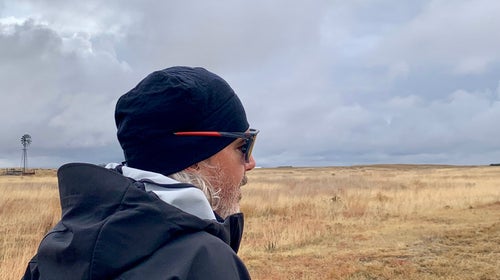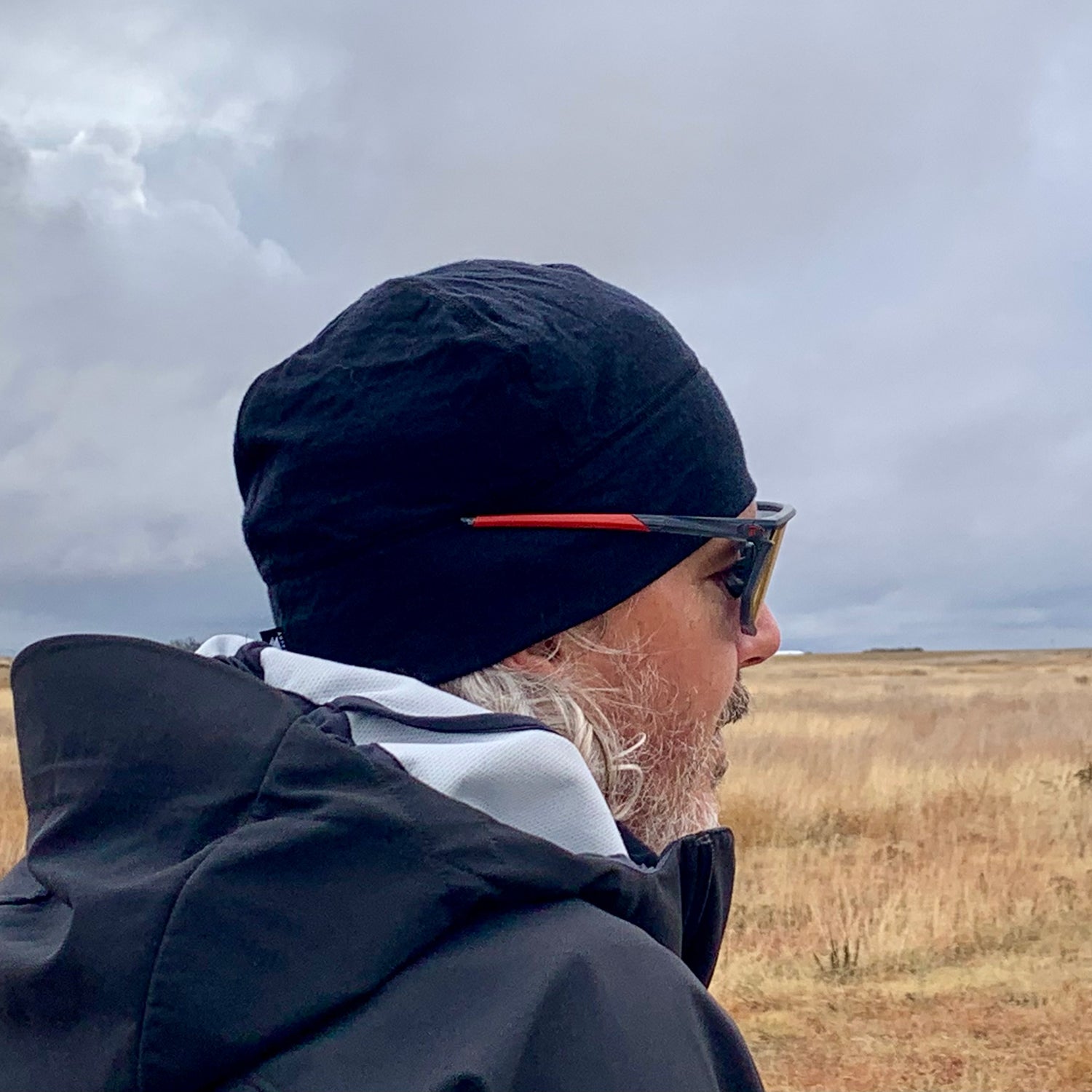Some are born to run in cold weather, while others have it thrust upon them. Take heart if you are in the latter category, one of those who hesitates to venture into frigid conditions. The men’s winter running hats, gloves, and mittens in this review proved remarkably effective in a wide range of winter outings, from damp, near-freezing fog to single-digit cold. For a relatively small investment, these items can add significant comfort and enjoyment to your winter running.
At a Glance
- Best All-Around Hat:
- Best All-Around Gloves:
- Best Value:
- Most Versatile:
- Best Gloves for Snow and Cold:
- Best Hat for Snow and Cold:
- Best for High Output Running:
- How to Choose Winter Running Hats, Gloves, or Mittens
- How We Test
- Meet Our Testers
If you buy through our links, we may earn an affiliate commission. This supports our mission to get more people active and outside. Learn more.
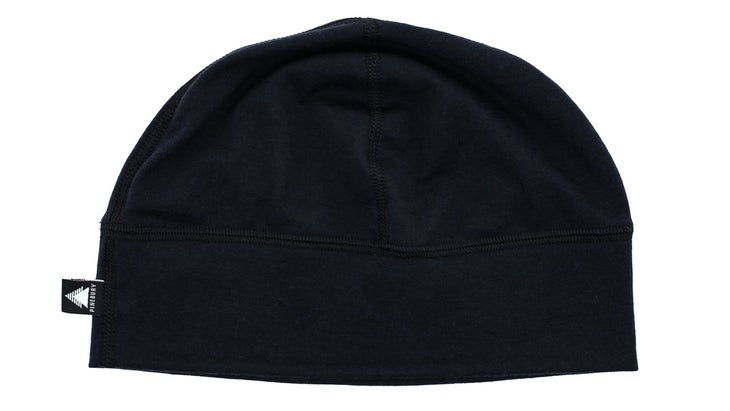
Best All-Around Hat
Pinebury Redington Merino Wool Cap
Materials: Nuyarn Performance Wool blend 90% Merino wool / 10% nylon
Sizing: S/M and L/XL
Pros and Cons
⊕ Surprising warmth in a lightweight build
⊕ Soft touch
⊗ Not wind resistant but can be layered under a hood
Thin but incredibly warm, the Redington Merino Wool cap is constructed with Nuyarn performance wool, a wool/nylon blend that delivers significantly more insulation and durability than wool alone or other blended weaves. The fabric is blanket-soft and thin, but it proved more than capable for running in snow and freezing fog. The close fit allowed us to wear the cap under a weatherproof jacket hood when the conditions got nasty, but we only felt the need for extra protection when the wind was howling. The cap also retained its stretch and fit even after getting tossed into the laundry, which you’ll likely need to do after donning it run after run.
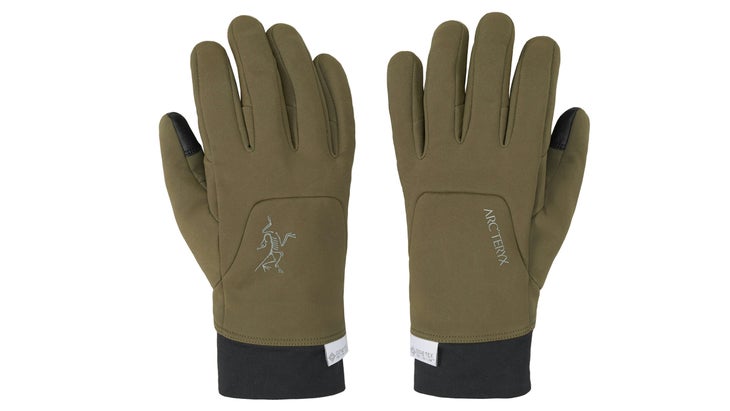
Best All-Around Gloves
Arc’teryx Venta Glove
Materials: Gore-Tex Infinium exterior, lightweight polyester fleece lining
Sizing: �ݳ�–X�ݳ�
Pros and Cons
⊕ Warm and breathable
⊕ Low-bulk fit provides finger mobility
⊗ Too warm for mild temperatures
When cold, wet weather threatens to force you indoors, these gloves offer the assurance of comfort and warmth to help brave the storm. The water- and wind-resistant, breathable softshell exterior feels similar to other lightweight glove fabrics but did a better job warding off wet snow and freezing temps. The snug fit, combined with grip-enhancing TPU reinforcements on the palm, let us securely grab a water bottle or a smartphone on the move. We used these gloves for 90-minute trail running adventures above 10,000 feet in the Colorado mountains and found that our hands stayed warm without overheating from the cool to frigid conditions. Despite their relatively thin profile, however, the Venta gloves were too hot for runs in mild temps above 30 degrees Fahrenheit.
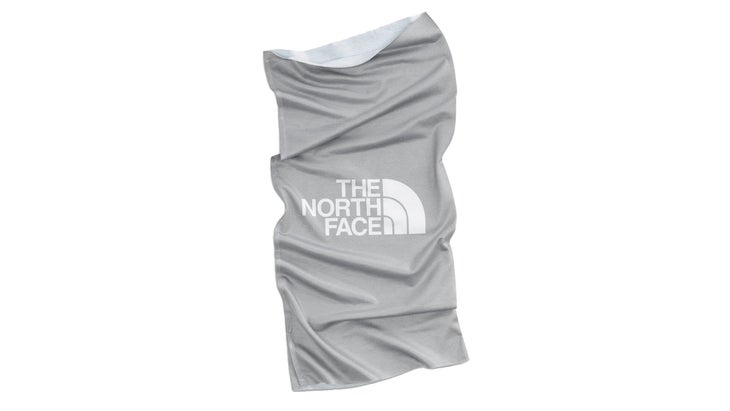
Best Value
The North Face Base Neck Gaiter
Materials: 88% recycled polyester, 12% elastane
Sizing: One size
Pros and Cons
⊕ Inexpensive
⊕ Versatile design and adaptable, stretchy fabric
⊗ Thin fabric provided fairly minimal insulation
This lightweight face and neck covering takes the sting out of cold weather while offering UPF 40+ sun protection. We took advantage of the stretchy fabric by pulling the neck covering up and over the mouth and ears, where it channeled body heat upwards in frigid conditions, and scrunching it low on the neck in warm temps. Using it as a face shield in super dry mountain air also helped prevent lung scorch. For the cost of a bottle of wine, you get comfort and protection across a broad range of temperatures.
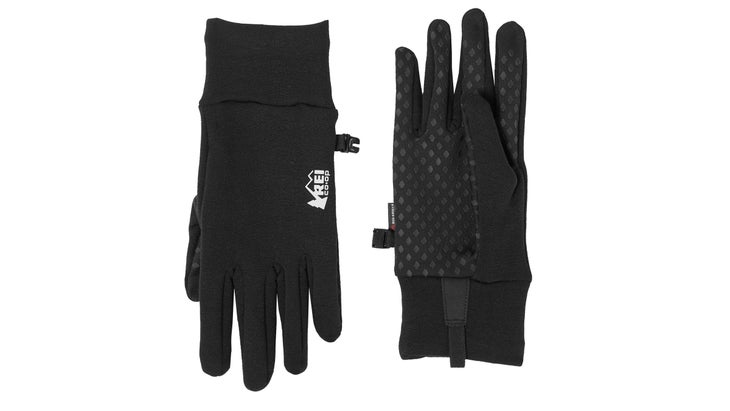
Most Versatile
REI Co-op Flash Power Stretch Glove
Materials: Power Stretch fleece: 53% polyester, 38% nylon, 9% spandex
Sizing: XS-XXL
Pros and Cons
⊕ Lightweight fabric works on its own in mild weather or as a liner glove in colder temps
⊕ Highly breathable plus durable
⊗ Too thin for frigid conditions on their own
The REI Co-op Flash Power Stretch gloves proved popular among testers for most outings, from road running to on-trail adventures, providing the light insulation needed to keep fingers toasty during high-intensity activity—as long as the temperatures stayed above or near freezing. And in extreme cold, these versatile gloves performed nicely as liners inside a heavier mitt or weatherproof shell. We appreciated the soft fabric, stretchy fit, and the small clips that kept them paired between runs (and in the wash). Conductive palm-side material that enabled dexterous phone use, plus a durable, abrasion-resistant exterior, and bluesign approval added to the glove’s appeal.
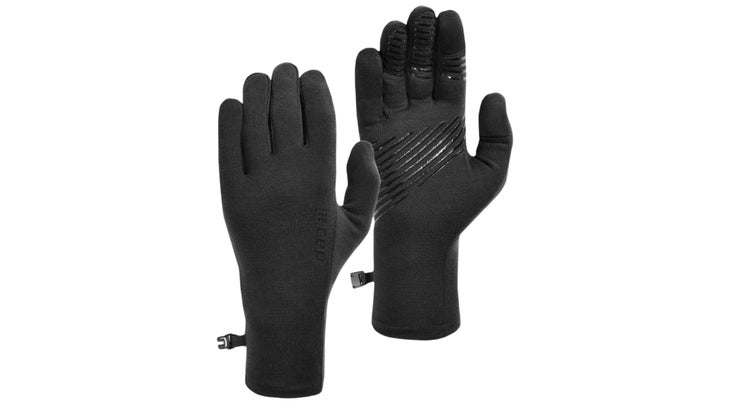
Best Gloves for Snow and Cold
CEP Cold Weather Merino Gloves
Materials: 61% Merino wool, 39% polyester/spandex blend
Sizing: S-XL
Pros and Cons
⊕ Warmth for sub-zero temps, even when wet
⊕ Grip-enhancing overlays
⊗ Lacks venting options for warmer temperatures
Despite lacking an outer hardshell, these hearty Merino gloves kept our hands warm in the coldest weather. Even accidentally dunking a hand into a puddle (hey, it gets slippery out there) didn’t result in frozen digits—the warm-when-wet quality of wool offered reliable protection. Plus, overlay texture bands on the palm and fingers significantly enhanced our grip, while a small touchscreen-friendly fingertip element allowed for operating a smartphone without removing a glove. Unobtrusive wrist cuff clips were a nice touch, helping keep them matched and ready for the next outing.
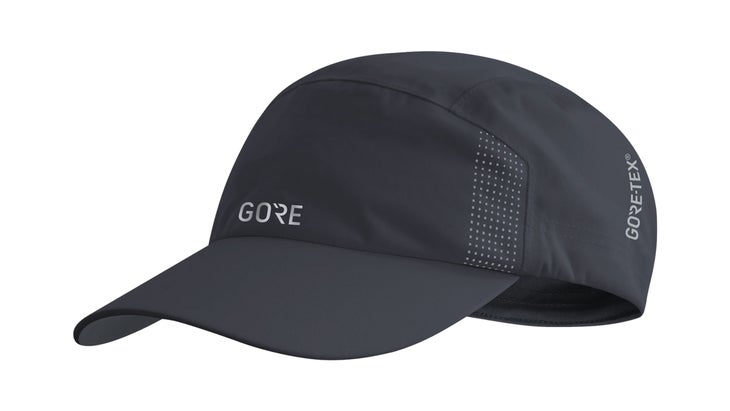
Best Hat for Snow and Cold
GoreWear Gore-Tex Cap
Materials: 80% polyester, 20% nylon with a Gore-Tex membrane
Sizing: One Size (Adjustable)
Pros and Cons
⊕ Traditional ball cap visor wards off snow and rain
⊕ Effective waterproofing
⊗ No ear coverage or insulation layer for extreme cold conditions
Sometimes, it’s better to keep things simple. A traditional ball cap style, combined with fully waterproof and windproof Gore-Tex fabric, proved effective for adventuring in all sorts of wet winter weather. Our testers stayed warm, and their heads dry, even in high winds and single-digit temps. The brim shielded precipitation from our faces, including protecting our eyes even when heavy snowflakes dumped on us. Fully taped seams meant that the waterproofing never faltered and the hat never wetted out or got heavy and soggy. We also appreciated the reflective panels, securely comfortable size-adjusting buckle, and the option of high-visibility yellow.
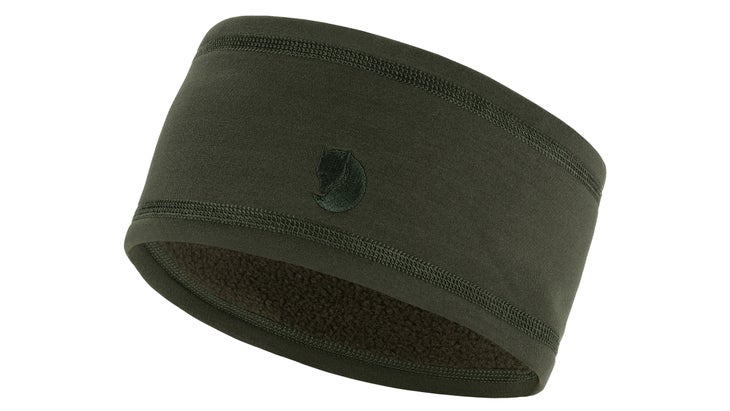
Best for High Output Running
Fjällräven Expedition Fleece Headband
Materials: Stretch fleece: 75% recycled polyester, 18% polyester, 7% elastane
Sizing: S/M and L/XL
Pros and Cons
⊕ Insulates the ears and forehead while allowing heat to escape
⊕ Soft and stretchy comfort
⊗ Not adjustable: slips around on smaller heads
This soft fleece headband proved perfect for intense workout efforts, wicking moisture from the skin, routing sweat away from the eyes, and allowing excess heat to escape off the scalp. The combination worked perfectly to keep us warm but not sweaty, even during repeated intervals on a frozen track. The subtly stretchy fabric had the right amount of flexible elastane to achieve a close fit that never felt constricting (but was too loose on a tester with a small head). Since looking fast is just as important as being fast, the headband sports solid colors, subtle contrast stitching, and a low-key embroidered logo for a clean, speed-inspiring demeanor.
How To Choose Winter Running Hats, Gloves, or Mittens
When shopping for items to keep your hands and head comfortable—not too hot, not too cold—during the winter months, first consider the conditions you’re most likely to face. Do temperatures drop below zero? Does it snow, rain, or sleet where you live? (And if so, do you enjoy running in those conditions?) From there, consider if you generally run hot or cold. And from there, peruse our guide to find options that might work best for your needs.
Also consider if packability is important to you; if you travel often during the winter months to other cold climates, or want the ability to stash your hat or gloves once you warm up during your run, choose items that compress easily. And remember that what feels cozy at the start can quickly turn clammy, so look for breathability to let out internal heat in addition to protection from external elements.
How We Test
Mark Eller led the test crew for this review. Based in Boulder, Colorado, he pursues running, cross-country skiing, snowshoeing, and other outdoor activities that keep him away from treadmills when the snow flies. He coordinated getting dozens of winter running items to additional testers in New England, the high plains, and the Rocky Mountains who wore the gear in this review in a variety of cold conditions for many months before making their picks and writing their comments.
Meet Our Testers
Lead reviewer Mark Eller trains through the winter on the roads and trails near his hometown of Boulder, Colorado. He’s a three-time Boston Marathon veteran, a hack Nordic skier, and a competitive racer in on-water racer rowing events.
Based in Cambridge, Massachusetts, Michael Rorick has run and raced in New England since his middle school track team days in Connecticut. He’s completed many editions of Boston, New York, and other major marathons.
Brian Metzler is the Editor in Chief of RUN and the founding editor of Trail Runner. A former walk-on Division I track athlete, he mostly runs on mountainous trails nowadays in Boulder and Leadville, Colorado.
Scott Douglas has run more than 130,000 miles since starting as a teen. He has held senior editorial positions at running publications and is the author or co-author of several well-known running books, including Advanced Marathoning, Meb for Mortals, and Running is My Therapy. Scott runs every day unless injured, and always runs outside, either despite of or because of living in North Yarmouth, Maine.
Jonathan Beverly is no stranger to winter weather. He began running in high school on the Maine coast, trained for marathons for years in New York, and now can be found chasing windmills in the western Nebraska Sandhills, accompanied by his two dogs. He is the senior running gear editor for ���ϳԹ���.
